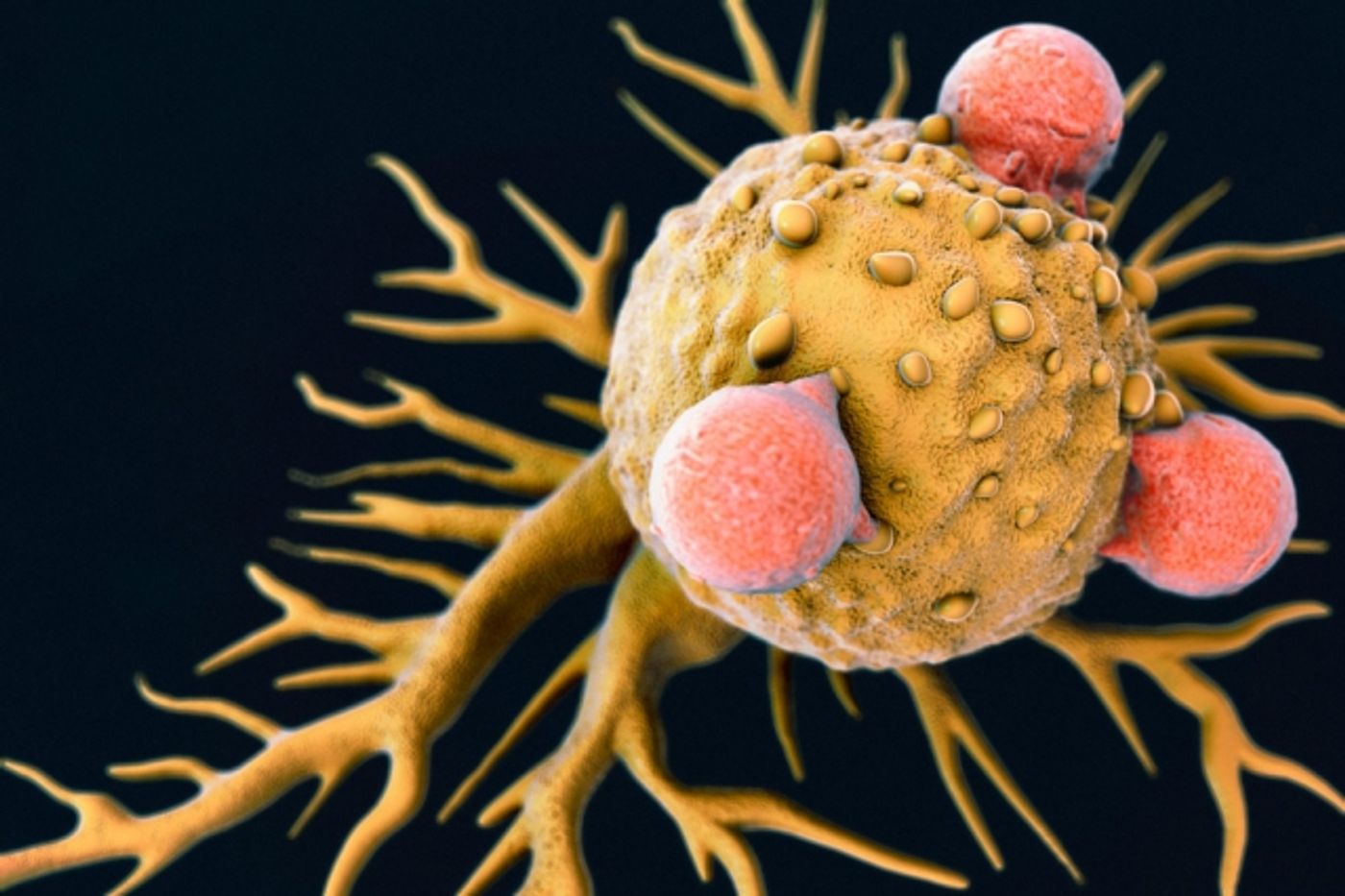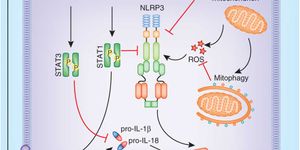Superior technology brings us novel images of cancer cells and lymphocytes this week, and now scientists can learn more about how our body fights back against metastasizing tumors.
Using a sophisticated microscope, scientist Bettina Weigelin from Radboud University Medical Center in the Netherlands observed and logged cancer cells moving through paths in the body made by blood vessels, muscle tissues, and nerves. Immune cells followed as expected, pursuing the abnormal cells to kill them. The imaging technology, called a multiphoton laser scanning microscope (MPLSM), provides “high resolution fluorescence imaging, allowing visualization of cellular structures of epidermis” (
Seminars in cutaneous medicine and surgery). Making these observations will help scientists visualize the effectiveness of immunotherapy in treating skin cancer, as Weigelin did with cytotoxic T cells.
Weigelin’s observations indicated that cancer cell metastasis is not random. As they travel through paths already existing in the body, they “choose the path of least resistance.”
“Never before has this migration behavior of tumor cells been recorded with such clarity,” stated a press release from Radboud.
Weigelin’s studies also lend insight into the battle between immune cells and cancer cells. Can immune cells defeat cancer cells before there are too many to control or they become resistant?
Weigelin looked at the cytotoxic T cell attack on cancer cells and saw that tissues with high concentrations of cytotoxic T cells were most successful in killing populations of cancer cells.
It makes sense then that a form of immunotherapy would be to inject an army of cytotoxic T cells into the body. Weigelin’s observations showed two important factors in immunotherapy attack: cytotoxic T cell numbers and their ability to burst tumor cells. Moreover, a large number of extremely effective cytotoxic T cells is the best defense against tumors.
However, cancer cells can still become resistant to cytotoxic T cell immunotherapy. A known alternative involves recruiting monoclonal antibodies, “signal substances that adhere to the cancer cells,” alerting the immune cells of their presence for quicker detection and deletion. Although it is also possible for cancer cells to become resistant to monoclonal antibody therapy, when both cytotoxic T cell and monoclonal antibody immunotherapies are applied, it is possible to overwhelm the tumor and avoid resistance.
Watch the following video to see cytotoxic T cells in action:
Source:
Medical News Today









